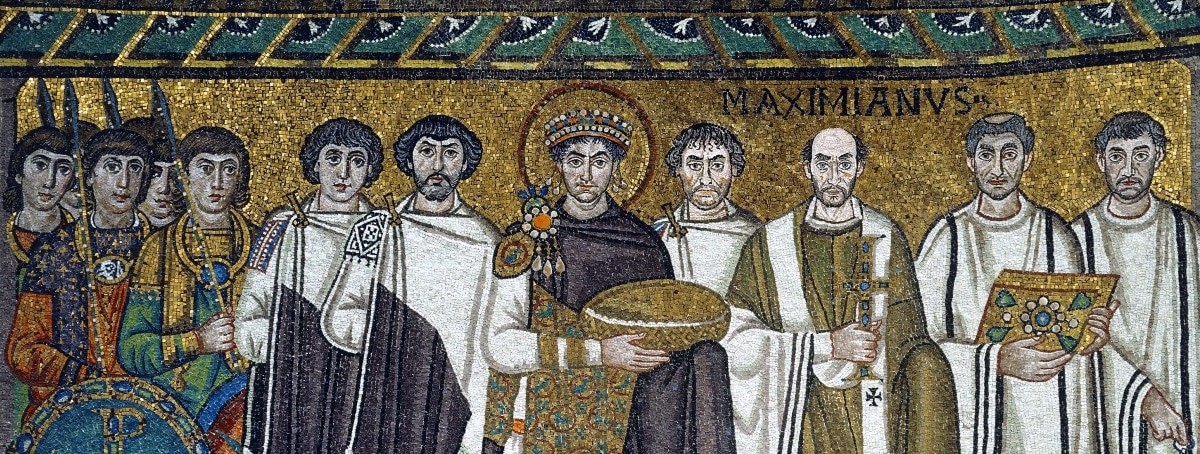II. Political Structure and Administration
2.1 Imperial Governance
The Byzantine Empire had a complex political structure. The Emperor (or Basileus) was the supreme ruler, often viewed as God’s representative on Earth. The Emperor wielded both political and religious authority, a concept known as Caesaropapism. The Byzantine state was highly centralized, with the Emperor’s authority extending to all aspects of governance.
2.2 Bureaucracy and Aristocracy
The Byzantine bureaucracy was renowned for its efficiency. Civil servants, or eunuchs, played a significant role in the administration of the Empire. The aristocracy, composed of wealthy landowners and military leaders, held considerable power and influence. They often served as provincial governors or military commanders.
2.3 Themes and Provincial Governance
The Byzantine Empire was divided into administrative regions known as “themes.” Each theme had a strategos, a military commander, who also had civil authority. This system allowed for a degree of local governance and flexibility.
2.4 Legal System
The Byzantines inherited and further developed the Roman legal system. Emperor Justinian’s codification of Roman law in the Corpus Juris Civilis was a significant achievement. Byzantine law influenced the development of civil law systems in Europe and remains an important part of legal history.
III. Religion and Culture
3.1 Christianity
Christianity played a central role in Byzantine culture and society. The Byzantines were primarily Orthodox Christians, and the Byzantine Orthodox Church played a crucial role in shaping religious and political life. The Emperor was the head of both the state and the Church, and the Patriarch of Constantinople was the highest-ranking clergyman.
3.2 Hagia Sophia
One of the most iconic examples of Byzantine architecture and a symbol of their devotion to Christianity is the Hagia Sophia. This grand cathedral was built under the reign of Emperor Justinian and remains a masterpiece of architectural and artistic achievement.
3.3 Art and Architecture
Byzantine art and architecture were distinct from those of the Western Roman Empire. Byzantine art emphasized religious themes and iconography. Mosaics were a common artistic medium, and many churches and basilicas were adorned with intricate mosaic designs. Icons, religious images of saints, played a significant role in Byzantine religious life.
3.4 Greek Language and Hellenistic Influence
The Greek language became the dominant tongue in the Byzantine Empire, supplanting Latin. Despite the shift, the Byzantines considered themselves the inheritors of the Hellenistic tradition, preserving and building upon the legacy of Ancient Greece. Byzantine scholars, known as “Byzantines,” made significant contributions to fields such as philosophy, literature, and science.
IV. Economy and Trade
4.1 Silk Road and Trade Routes
The Byzantine Empire’s location at the crossroads of Europe and Asia made it a crucial hub for trade. Constantinople served as a vital point on the Silk Road, facilitating the exchange of goods and ideas between East and West. Trade brought immense wealth to the Empire.
4.2 Coinage and Economy
The Byzantine Empire maintained a stable and prosperous economy. Its gold coin, the solidus, was widely accepted and used as a standard for trade in the Mediterranean region. Byzantine coinage had a lasting impact on European currency systems.
4.3 Agricultural Production and Estates
Agriculture played a significant role in the Byzantine economy. The Byzantines were known for their advanced agricultural techniques and produced a surplus of crops, particularly wheat and olive oil. Large estates known as “latifundia” were a characteristic feature of Byzantine agriculture.
4.4 Decline and Economic Pressures
As the Empire faced numerous external and internal pressures, its economy suffered. Constant wars, territorial losses, and financial mismanagement all contributed to economic decline. The loss of Egypt, a key source of grain, had severe consequences for Byzantine food security.
V. Military and Defense
5.1 Byzantine Army
The Byzantine military was well-organized and capable. It consisted of both professional soldiers and conscripted peasants. The army was divided into thematic units, each responsible for its defense and administration. The elite Varangian Guard, composed of Scandinavian warriors, served as the Emperor’s personal bodyguard.
5.2 Defensive Fortifications
Constantinople was one of the most heavily fortified cities in the world. Its impressive defensive walls, known as the Theodosian Walls, successfully protected the city for centuries. The Byzantines also developed advanced siege technology and used Greek Fire, a highly effective incendiary weapon, in warfare.
5.3 Decline and Military Challenges
The Byzantine Empire faced numerous military challenges, including invasions from various barbarian tribes and the rise of Islam. The Byzantines struggled to maintain their territorial integrity and often relied on diplomacy and alliances to survive.
VI. Legacy and Impact
6.1 Preservation of Greco-Roman Culture
One of the most enduring legacies of the Byzantine Empire is its role in preserving Greco-Roman culture. The Byzantines safeguarded and transmitted classical texts and knowledge to the medieval West, contributing significantly to the Renaissance.
6.2 Eastern Orthodox Christianity
The Byzantine Orthodox Church left a profound mark on the development of Eastern Orthodox Christianity. The theological debates and church councils in the Byzantine Empire helped shape the doctrines of the Eastern Orthodox Church, which has millions of followers today.
6.3 Influence on Art and Architecture
Byzantine art and architecture continue to inspire artists and architects to this day. The use of mosaics, iconic imagery, and the distinctive domed architecture of Byzantine churches have left an indelible mark on the art world.
6.4 Legal and Administrative Legacy
The Byzantine legal system, as codified by Justinian, continues to influence legal thought and practice in modern civil law systems. The concept of a centralized bureaucracy and the division of territories into themes had a lasting impact on administrative structures.
6.5 The Fall of Constantinople
The fall of Constantinople to the Ottoman Turks in 1453 marked the end of the Byzantine Empire and is seen as a turning point in history. It had profound consequences for European geopolitics and trade routes, leading to the Age of Exploration and the eventual rise of the Ottoman Empire.
Conclusion
The Byzantine Empire, with its rich history, intricate culture, and lasting legacy, remains a fascinating topic for study. From its origins in the Eastern Roman Empire to its decline and fall, the Byzantines left an indelible mark on the course of history. Their contributions to art, architecture, law, and the preservation of classical knowledge continue to influence the modern world. The Byzantine Empire serves as a testament to human resilience, adaptability, and the enduring impact of great civilizations.


